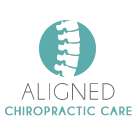Degeneration – Phase 1
In the first stage of spinal degeneration, there is a minor loss of the normal spine balance and the normal curvatures of the spine. The surrounding tissues and structures of the spine, such as nerves, discs and joints, begin to show visual signs of increased stress and age (degeneration). This stage of the degeneration process is rarely accompanied with any major pain. At this point, there is a good chance these abnormalities can be corrected with proper care, and the individual can return to normal.
Degeneration – Phase 2
In the second stage of spinal degeneration, there is a dehydration and narrowing of the discs and deformation of the bones. The posture continues to degenerate with a further loss of the normal spinal curvature. The dehydration and narrowing of the disc continue, the vertebrae (bones) come closer together. The posterior facets (hinges) also come closer together, as the vertebrae settle, which results in the smooth slick facet surfaces rubbing together, which results in “scratched” surfaces, which accelerates their degeneration (facet arthropathy).
During this phase, aches and pains can be significant. Fatigue and stress are often more common at this stage. There is a good chance of improvement at this stage and with the proper care, the individual may be able to be pain-free, but the individual cannot, structurally, return to normal.
Degeneration – Phase 3
In the third stage of spinal degeneration, dehydration and narrowing of the discs continue. The vertebrae (bones) demonstrate additional modeling and deformation, as compared to Phase 2. The posture continues to degenerate with even a further loss of the normal spinal curvature and loss in height. With further dehydration and greater narrowing of the discs, the vertebrae (bones) move even closer together. Degeneration of the posterior facets (hinges) also increase, and the small oval canal (neural foramen), through which the spinal nerve exits the spinal canal, also narrows with less space for the exiting nerve. Some permanent nerve damage is possible at this stage. Symptoms of pain, numbness and tingling can be significantly greater, as compared to phase 2. Fatigue and stress are again increased. There is a fair to good chance of symptomatic improvement at this stage, and with the proper care, the individual may be able to be mostly pain-free. Flexibility and function of the spine are moderately compromised.
Degeneration – Phase 4
In the fourth stage of spinal degeneration, most damage is permanent, including scar tissue, nerve damage and modeling / deformation of the bones (vertebrae). The discs continue to dehydrate and narrow. The vertebrae bodies and posterior facets (hinges) move even closer together. The degenerative reactions (scar tissue and bone spurs) attempt to grow the bones together. The degenerative reactions further narrow the neural foramen and frequently compress the exiting nerve root, which often leads to further permanent nerve damage. Symptoms and signs are usually greater and more severe, than phase 3. Fatigue and stress continue to increase. Management of pain and discomfort is usually the main priority. Improvement in the flexibility and function of the spine is very difficult. Of course, the condition of the spine is permanent and irreversible.






